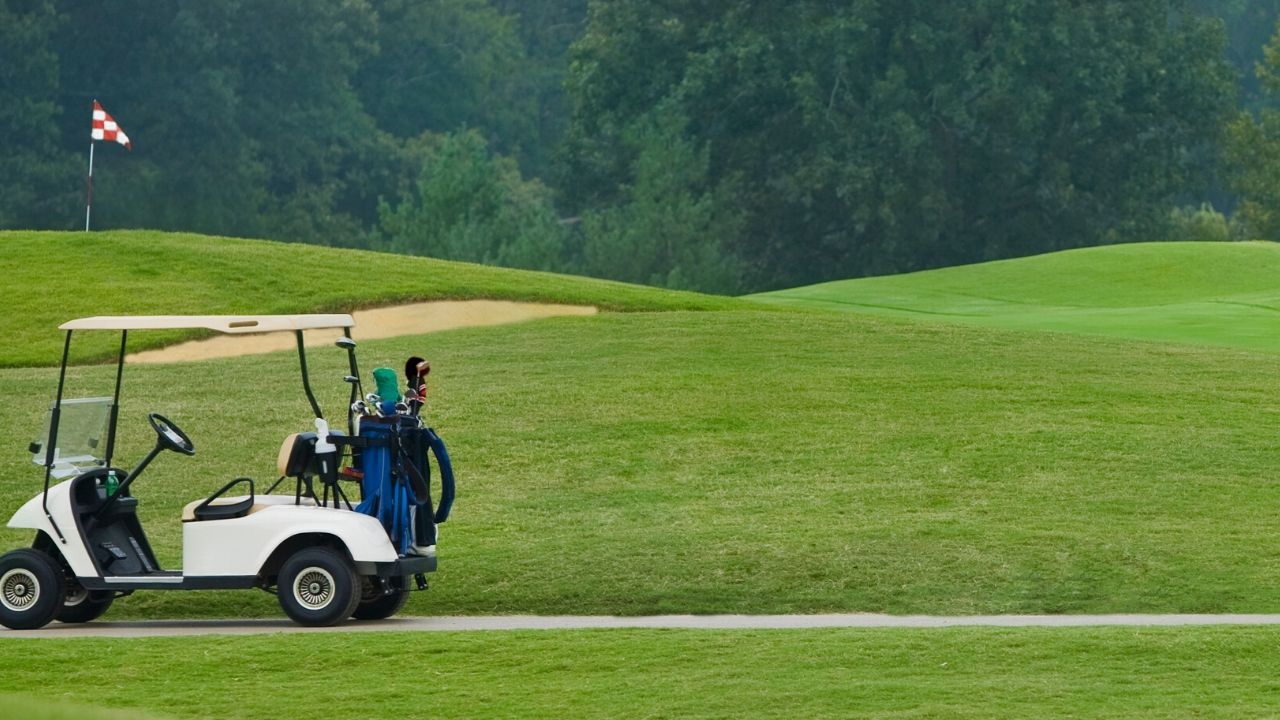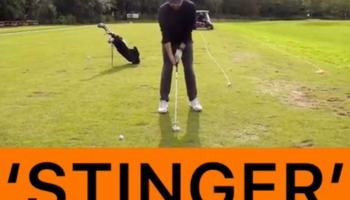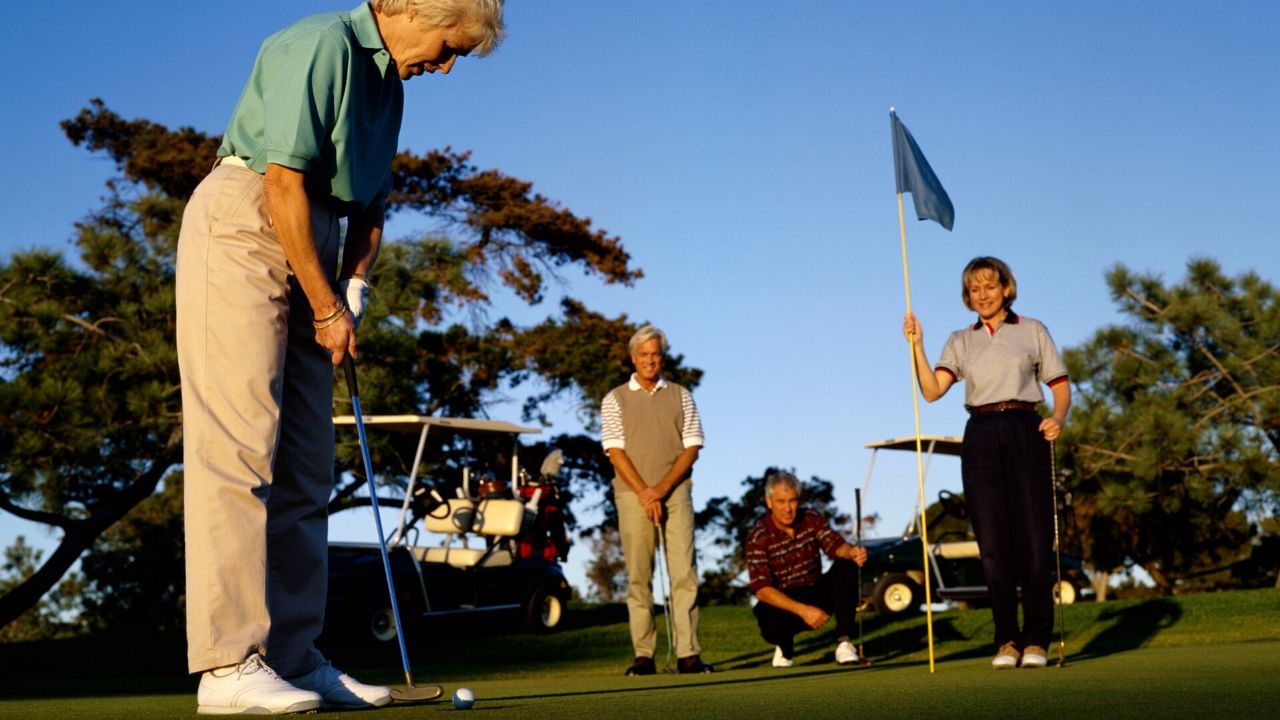
One of the most important components of a good golf swing is the release of the hands. This article will cover how the hands impact the golf swing, and how to position your hands during the downswing. This article will also discuss the effects of grip pressure, and how to achieve low takeaways using quiet hands. Here are some suggestions to improve your swing.
Golf swinging requires the hands to be released.
The release of your hands is the most important part of a golf swing. As the clubhead revolves around your hands, the wrists should be free to follow through. Before the ball touches their hands, a skilled ball-striker will straighten out their left arm. The early release of the hands will result in poor contact and inconsistent results.
Another key element of the golf swing is the natural rolling of your hands. Top golfers will typically have their top hand at the top of the grip during the backswing, while their bottom hand is closer to the target during the downswing. They will swap positions at impact to make a more powerful swing. The clubhead speeds can be increased by having the head lower.

Positioning your hands during the downswing
Most amateur golfers forget to use the upper body in the downswing. They start the swing with more of their upper body than their lower. This is a mistake that can lead to a loss of power. The right arm transfers the momentum from backswing to the golf swing. You can ensure that your club face is squared before you hit the ball by placing your hands correctly during the downswing.
When you're swinging the golf ball, it's important to place your hands correctly during the downswing. This is the only link between the golf club and the ball. So it is vital to ensure your hands are in front of impact. Learn how to do this and your golf swing will improve dramatically. Keep reading to learn more about proper hand placement and how to make the most of this crucial part of your swing.
Influence of grip pressure on golf swing
Grip Pressure in Golf Swing: Your hands should be tightly gripped when you hold your golf club. This is the equivalent of the story of Goldilocks and the three bears: too loose a grip will make the club handle twist when you hit it, and too tight a grip will prevent your hands from swinging the club properly.
You can use this analogy to see how you would hold a bird to determine the grip pressure that your hands should be applying to a golf swing. It should be held securely enough to keep it in place, but not too loosely or too rigidly. Another example would be to hold a spotted Owl's egg. These eggs are delicate and should not be held too tightly. The toothpaste analogy also helps to visualize grip.

Getting a low takeaway with quiet hands
Getting a low takeaway with quiet, silent hands in the golf swing is a fundamental element of the correct golf swing. Many players confuse quiet hands with tempo, and while this is an important aspect of the golf swing, tempo itself is unimportant. What matters is your hands' performance during the swing. Your shots will be farther and more accurate if they are performed well.
One of the best places to start when trying to get a low takeaway with quiet hands in the golf swing is with the downswing. The hands are passively following the arm and shoulders during this stage. This passive movement will give you the best chance to get a low takeaway. The angle of the wrist in the backswing is also determined by the hands.
FAQ
What is a bogey, you ask?
A bogey refers to a fictional number that is used as a target by golfers. It is not part of the game. Instead, it serves as a scoring system. The player who shoots closest to the number wins the hole.
Jock Utchison, the first professional Scots golfer, came up with the idea for a bogey. He had been playing alone at home when he came up with this idea.
He wanted to keep track how he was doing, so he wrote a number on paper and stuck it up to his bed. This became known as the "Hutchy Bogey."
What is the best thing to bring on a vacation to the fairway?
Consider bringing snacks and drinks. Also, remember to pack your favorite tee shirt, sunglasses, gloves, and towels.
What clothing should I wear for the course?
You must dress appropriately when playing golf. You should wear:
-
Good shoes - The shoes that you wear on the golf course should fit your feet comfortably. They should provide support and stability.
-
Lightweight trousers or shorts - Shorts should cover your knees and thighs. Trousers must be long enough for you to bend easily.
-
Long-sleeved shirt. Your shirt should be sun-protective. It should provide good ventilation.
-
Sweatpants and shorts – Pants should be loose fitting and comfortable. They should be able to move freely.
-
Socks – Choose socks that are soft and comfortable.
-
Hat – Make sure you choose a hat that fits comfortably. It should cover both your ears and neck.
-
Sunscreen lotion – Apply sunscreen before heading to the fairway.
What does a golf ball look like?
Golf balls are usually made of rubber and plastic. It has dimples on its surface that make it bounce when struck.
What clubs should I use for my purposes?
There are many types of clubs. A driver is a heavy-metal club that allows players to hit the ball farther. Other clubs include putters, irons wedges, wedges, woods, and irons.
Woods are longer clubs designed to allow players to get close to the pin while still being able to reach the green. They are often used for long drives and approach shots.
Irons are shorter clubs that are designed to help players hit the ball closer to the pin. They are commonly used for chipping or putting.
Wedges are specialized clubs that are used to control the flight path of the ball. These are used to direct shots that require precise direction.
Putters are small clubs designed to roll the ball towards the cup. These are short putts that players use to play.
The type you make depends on the type club you use. Different types shots can be served by different clubs.
Drivers can be used to hit the ball farther away than the hole, for instance. Wooden are perfect for driving the ball long distances. Irons can be used for quick shots. Wedges are great at controlling the ball's flight. Putters are great for rolling the ball into a hole.
How can a player score points while playing golf?
Points are awarded based how well a golfer performs in a competition. In golf, there are many ways to score points. One example is that a player can win a tournament simply by scoring more than anyone else. In another scenario, a player might place second in a tournament. This would allow them to receive half the prize cash that was won by their winner. For placing in the third through 10th places, points are also given. These extra points are known by the "strokes."
These official competitions are not the only ones that award points. There are also many unofficial events which award points to the highest performing players. A player might be eligible for bonus points if they perform well in a specific event.
Statistics
- They do this by means of assessing and rating courses according to the average good score of a "bogey golfer," a player with a handicap of around 20. (en.wikipedia.org)
- In the United States, women made up 25 percent of golfers in 2021, which was up from 19 percent in 2011, and junior female golfers account for 35 percent or 1.1 million golfers.[50] (en.wikipedia.org)
- Professional golfers typically make between 60% and 70% of greens in regulation. (en.wikipedia.org)
- They do this by means of assessing and rating courses according to the average good score of a "bogey golfer," a player with a handicap of around 20. (en.wikipedia.org)
External Links
How To
How can you play better when the wind blows?
Golf is played in open areas on grassy areas. It is one of most well-known sports. There are many kinds of golf courses in the world. They range from public parks and private clubs. Indoors, golf is also possible at malls and indoor arenas. The game is played on a series or holes. Players must hit the balls into these holes. Each hole is equipped with a fairway, rough and hazards (e.g. water) You can choose to use a driver, wedge (long iron), or putter depending on what type of shot you are looking for. The rules may dictate that players must carry the ball at a certain distance before hitting the ball. Others may not have to do so. When playing outdoor golf, various conditions affect how the player hits his/her shots. These include temperature, humidity and visibility.
There are two types main winds: headwinds or crosswinds. Headwinds blow left to right and crosswinds from left to right. If the wind blows toward the golfer it means that he/she hits against the wind. But if it blows away from him/her it will mean that he/she hits with the wind. The ball will travel higher and farther when there is strong wind, making it difficult to play golf. This makes it more difficult for players to control the ball's direction and trajectory. To overcome these problems, players should keep their club faces perpendicular towards the ground. They strike the ball with maximum force and contact so it is fully in contact with the ground. However, even though the ball flies lower in stronger wind, it travels farther due to increased air resistance.
It takes a lot practice to play golf in wind. The wind can affect the flight path of your ball, as we have already mentioned. A good golfer should always know what kind of wind is currently affecting the area. He/She would adjust their swing accordingly to ensure that they hit the ball accurately and don't lose any energy. Another important aspect to consider is where the wind is coming from. The wind doesn't always travel the same way in all directions. For example, the wind from the ocean tends to be quite light, but it's often stronger near shoreline. Similar to this, wind blows strongly close to the ground. Golfers need to pay particular attention to wind direction, intensity and other factors.
Golfing in the wind can be challenging. You need to watch the wind and make sure that your swing is aligned properly. You must also learn to read wind patterns and adjust your swing accordingly.